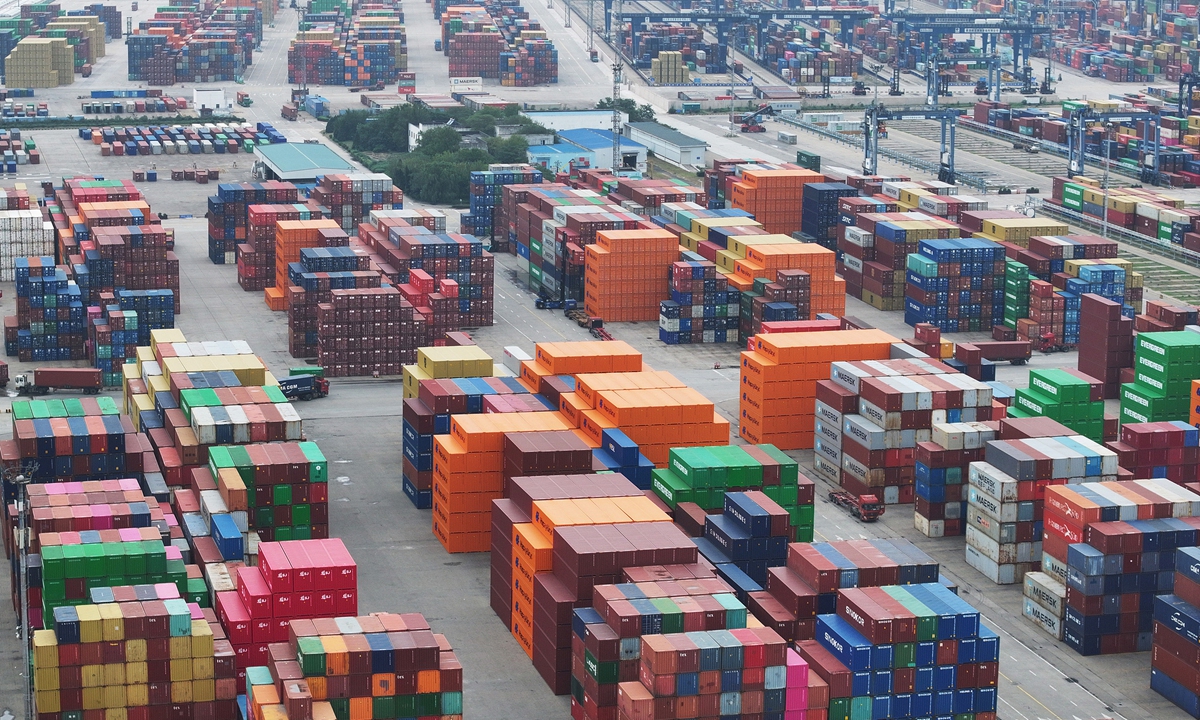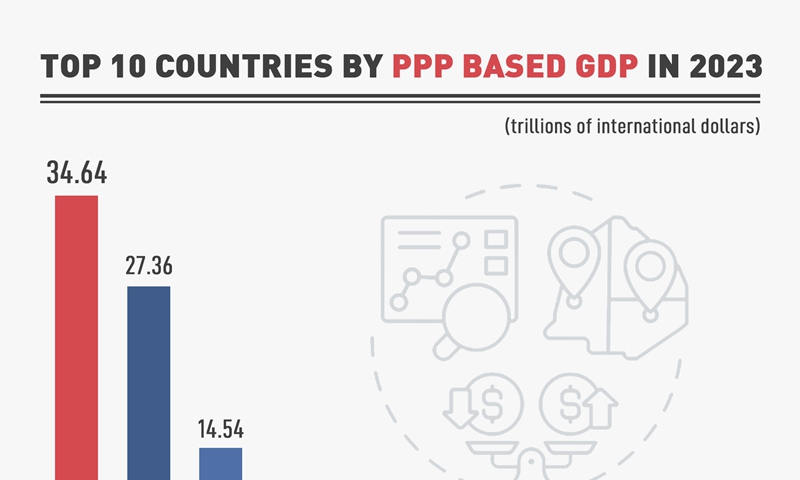China's GDP grows 4.8% in first three quarters; growth rate hard-won despite challenges: experts

Photo: CFP
China's gross domestic product (GDP) grew by 4.8 percent in the first three quarters of 2024, reaching 94.97 trillion yuan ($13.33 trillion), according to data released by the National Bureau of Statistics (NBS) on Friday.
This growth indicates that the world's second-largest economy continues to show positive and resilient growth momentum amid various internal and external challenges, the NBS official and experts said on Friday.
The 4.8 percent GDP growth in the first nine months shows that economic growth is stable and that economic activities in the third quarter have been keeping pace, which has laid a solid foundation for achieving the full-year target of 5 percent, an official and experts said.
In the third quarter, GDP grew by 4.6 percent year-on-year, slightly down from the 4.7 percent growth recorded in the second quarter, but 0.1 percentage points higher than some foreign media's projection.
Analysts anticipate that the strong policy measures introduced by the government so far this year, along with expectations for additional stimulus initiatives, will provide additional momentum for the country's economic development.
Growth highlights
Despite a complicated external environment and emerging challenges at home, the Chinese economy has posted generally stable performance, Sheng Laiyun, deputy head of the NBS, told a press conference Friday.
"Positive factors driving a steady economic recovery accumulated and increased in September," Sheng said.
By industry, the added value of the primary industry reached 5.77 trillion yuan, up 3.4 percent year on year; the secondary industry totaled 36.14 trillion yuan, up 5.4 percent; and the tertiary industry amounted to 53.07 trillion yuan, up 4.7 percent, according to the NBS on Friday.
The added value of industrial enterprises above designated size increased by 5.8 percent year-on-year, as industrial production is expected to further stabilize.
The fixed asset investment in the first three quarters edged up by 3.4 percent year-on-year, reaching 37.89 trillion yuan. Among them, the investment in infrastructure rose by 4.1 percent and that of manufacturing sector increased by 9.2 percent.
The domestic consumption showed a pick-up trend. The total retail sales of consumer goods in the first three quarters were up 3.3 percent, reaching 35.35 trillion yuan, the NBS data showed.
Moreover, in the first three quarters, the consumer price index rose by 0.3 percent year-on-year, 0.2 percentage points higher than that of the first half of the year.
The resilient and hard-won growth rate in the first three quarters is the result of several positive factors, including government policies aimed at boosting domestic consumption, trade, and investment, Li Chang'an, a professor at the Academy of China Open Economy Studies of the University of International Business and Economics, told the Global Times on Friday.
Chinese authorities have already put in place a bunch of measures to stimulate market demand, including the issuance of 1 trillion-yuan worth of ultra-long-term special treasury bonds and a program for large-scale equipment renewal and trade-ins of consumer goods.
Foreign trade, a pillar of economic growth, also played a driving role. According to the latest figures released by China's General Administration of Customs on Monday, China's total trade reached 32.33 trillion yuan ($4.57 trillion) in the first three quarters of 2024, setting a record with an increase of 5.3 percent year-on-year.
The strong performance of foreign trade in the first three quarters reflects continued global demand for China's competitive products and an optimized trade structure, with the "new three" items like electric vehicles, lithium-ion batteries, and photovoltaic products gaining significant footholds, Li said.
Meanwhile, the country's housing market, another key pillar of economic development, is showing positive signs of recovery.
Following three years of consistent policy adjustments, China's housing market appears to have bottomed out, Minister of Housing and Urban-rural Development Ni Hong said at a press conference on Thursday.
China plans to expand bank credit lines for "white list" housing projects to 4 trillion yuan ($562 billion) by the end of 2024. This will encompass all qualifying property projects in the list and stabilize the real estate market, Ni said.
Amid China's intensive policy measures, foreign institutions have recently revised their GDP growth forecasts for China upward for 2024. For example, Goldman Sachs recently increased its China 2024 GDP projection from 4.7 percent to 4.9 percent, Reuters reported.
On track for annual target
Favorable conditions for economic stabilization and recovery are increasing, and confidence in achieving the expected target of around 5 percent is growing, an official and experts said.
The national economy was generally stable with steady progress in the first three quarters, and the effects of policies continued to manifest with major indicators showing positive changes recently, Sheng said.
"However, we should be aware that the external environment is increasingly complicated and severe, and the foundation for sound economic recovery and growth still needs to be strengthened," Sheng noted.
The nation is also undergoing a key period of structural adjustment, which continues to be painful, the NBS official added.
Currently, China's economy is facing many challenges, including uncertainty in the external environment, insufficient domestic demand, and some industries facing transformation and development, Wang Peng, an associate research fellow at the Beijing Academy of Social Sciences, told the Global Times on Friday, noting that these challenges have put certain pressure on the realization of the full-year economic growth target.
Despite the challenges, China's economy has so far withstood the pressures and achieved a steady growth trend, which fully proves that China's economy has strong resilience and potential, experts said.
The 4.8 percent growth achieved in the first three quarters, which was not easily obtained, lays a solid foundation for reaching the full-year target, despite the increasingly complex and changing macroeconomic situation driven by rising external pressures, Sheng said.
Meanwhile, more stimulus is needed to fully secure this goal, Wang said, noting that necessary measures include increasing individual incomes, cutting taxes, improving the business environment, and expanding investment in infrastructure.
The nation is facilitating industrial upgrades and transformation, supported by technological advancements, which will also play a crucial role in driving economic growth, Wang said.


